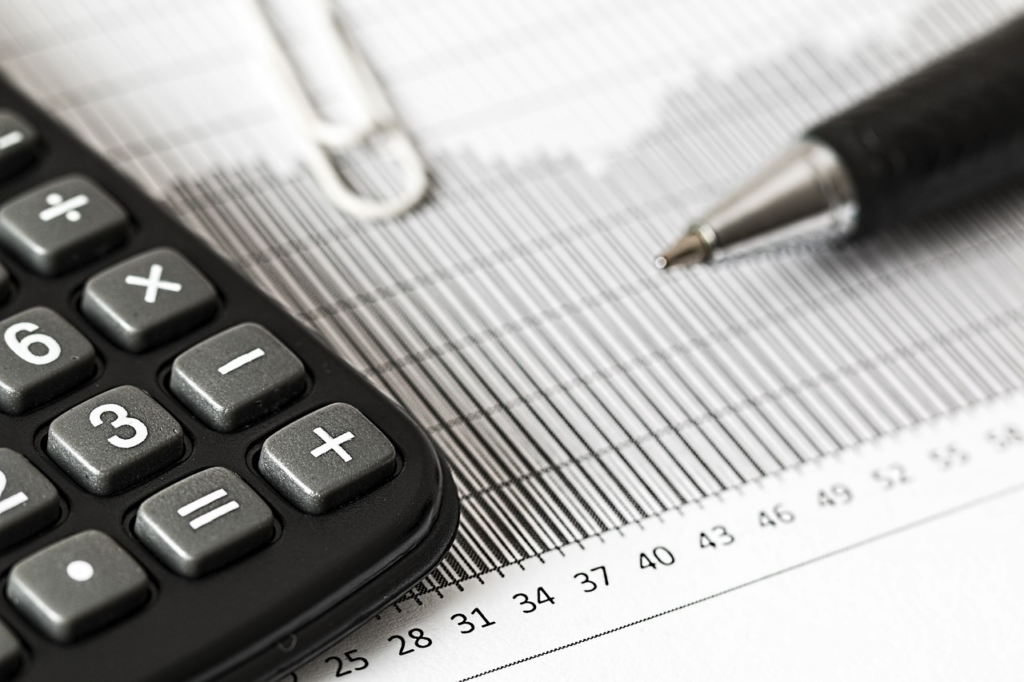When we start venturing into the world of investments, we often come across a series of acronyms and terms that may seem confusing at first glance. Two of these acronyms that often come up in conversations about investments are CDB and CDI. But what is the difference between them and what do they represent?
In this article, we'll explore what CDB and CDI are, their differences, how they work and how to choose between them, so that you can make more informed decisions about where to invest your money.
What is a CDB?
The Bank Certificate of Deposit is one of the best known and most popular investment products in the Brazilian financial market. It is a fixed-income security issued by banks in order to raise funds to finance their activities and projects.
When you invest in a CDB, you are essentially lending money to the bank. In exchange for this loan, the investor receives a return in the form of interest, which can be pre or post-fixed, depending on the conditions of the security.
- Issue: CDBs are issued by banks as a way of raising funds. This means that by purchasing a CDB, you are providing money to the bank, which will use these funds to carry out its operations and lend to third parties.
- Term and remuneration: CDBs can have different maturities, ranging from a few days to several years. The longer the investment period, the higher the interest rate offered by the bank. In addition, the CDB's remuneration can be pre-fixed or post-fixed:
- Pre-fixed: In this case, the interest rate is determined at the time of application and remains fixed throughout the investment period. This means that you know exactly how much you will receive at the end of the term.
- Post-fixed: In post-fixed remuneration, the CDB's return is linked to some index, the CDI (Interbank Deposit Certificate) being the most common. This means that the return on your investment can vary according to the variation in the CDI during the investment period.
- Risk: CDBs are considered low-risk investments, especially when issued by solid, well-established banks. This is because they are guaranteed by the Credit Guarantee Fund (FGC), which ensures that the investor will be reimbursed in the event of the issuing institution going bankrupt, up to a limit of R$ 250,000 per CPF and per financial institution.
- Liquidity: The liquidity of CDBs can vary according to the conditions established at the time of investment. Some CDBs may have a fixed maturity, which means that the investor will only be able to redeem the amount invested at the end of that period. However, there are also CDBs with daily liquidity or shorter maturities, which allow early redemption of the capital, subject to specific conditions and possibly with early redemption penalties.

Why invest in CDBs?
Investing in CDBs can be an interesting option for different investor profiles for various reasons:
- Security: As mentioned above, CDBs are considered low-risk investments, since they are guaranteed by the FGC in the event of the issuing institution going bankrupt.
- Profitability: Depending on market conditions and the term of the investment, CDBs can offer good interest rates, providing an attractive return for the investor.
- Diversification: CDBs can be an important part of an investment diversification strategy, helping to balance the portfolio and reduce risks.
However, it's important to note that, like any investment, CDBs also have their disadvantages and limitations. For example, in a scenario of falling interest rates, the profitability of post-fixed CDBs can be negatively impacted. In addition, it is essential to evaluate the specific conditions of each CDB, such as term, remuneration and liquidity, before making an investment decision.
What is CDI?
The CDI, or Certificado de Depósito Interbancário, is a daily interest rate that serves as a reference for various financial operations in the Brazilian interbank market. This rate is used as a basis for calculating the cost of money borrowed between banks during a working day.
In other words, the CDI is the rate at which banks lend money to each other to guarantee their temporary cash needs. It therefore represents the cost of credit between financial institutions and is a measure of the liquidity of the interbank market.
The CDI is calculated daily by Cetip (Central de Custódia e de Liquidação Financeira de Títulos), currently part of B3, based on the interest rates charged by a selected group of financial institutions. These rates are then weighted and calculated to determine the weighted average CDI, which is published daily.
The CDI is important in the Brazilian financial market for several reasons:
- Reference for investments: The CDI is widely used as a benchmark to calculate the profitability of various fixed-income investments, such as CDBs (Bank Deposit Certificates), LCIs (Real Estate Credit Bills), LCAs (Agribusiness Credit Bills) and debentures.
- Monetary policy: The CDI also plays an important role in the country's monetary policy. It directly influences the Brazilian economy's basic interest rate, the Selic rate, which in turn has an impact on a number of economic variables, such as inflation, consumption and investment.
- Pricing financial products: In addition to serving as a benchmark for investment returns, the CDI is also used to price a variety of financial products, such as loans, financing and derivatives.
- Indicator of market liquidity: The behavior of the CDI over time can also indicate the level of liquidity in the interbank market. Significant variations in the CDI rate can reflect changes in the availability of credit between banks and general financial market conditions.
The CDI is a daily interest rate used as a reference for a variety of financial operations in the Brazilian market, playing a crucial role in determining credit costs, the profitability of investments and the conduct of monetary policy.
What is the difference between CDB and CDI?
The main difference between CDB and CDI lies in the way they are used and remunerated.
A CDB is a fixed-income security issued by banks to raise funds from investors. When you invest in a CDB, you are lending money to the bank and, in return, you receive an interest rate agreed at the time you buy the bond. This interest rate can be pre-fixed or post-fixed, i.e. it can be determined in advance or linked to an index, such as the CDI.
On the other hand, the CDI is a reference rate used in the Brazilian financial market. It is very close to the Selic rate, which is the basic interest rate for the Brazilian economy. The CDI is used as the basis for calculating the yield on various investments, including CDBs. So, when you invest in a post-fixed CDB, for example, the yield on your investment may be linked to the CDI.
In short, while the CDB is a fixed-income security issued by banks to raise funds from investors, the CDI is a rate used as a reference for various investments and loans in the financial market.
How do CDB and CDI work?
To better understand how CDB and CDI work, let's take a look at some important aspects of each.
CDB
- Issue: CDBs are issued by banks as a way of raising funds to finance their activities.
- Remuneration: When you invest in a CDB, you are lending money to the bank and in return you receive remuneration in the form of interest. This remuneration can be pre-fixed or post-fixed, depending on the conditions of the security.
- Risk: CDBs are considered low-risk investments, since they are guaranteed by the Credit Guarantee Fund (FGC) in the event of the issuing institution going bankrupt, up to a limit of R$ 250,000 per CPF and per financial institution.
CDI
- Reference rate: The CDI is a reference rate used in the Brazilian financial market. It represents the average rate of loans made between banks over the course of a day.
- Index: The CDI is used as an index in various fixed-income investments, such as CDBs, LCIs, LCAs, among others. This means that the yield on these investments can be linked to the CDI.
- Volatility: Despite being a stable reference rate, the CDI can vary over time, influenced by various economic and political factors.
How to choose between CDB and CDI?
The choice between investing in CDBs or CDI-linked products will depend on your financial objectives, your investor profile and the momentum of the market.
When to choose a CDB
Choosing to invest in Bank Deposit Certificates (CDBs) can be a sound decision for a variety of situations and investor profiles. Here are some important considerations when choosing CDBs as part of your investment strategy:
1. Security and guarantee
CDBs are considered low-risk investments, especially when issued by solid, well-established banks. This is due to the guarantee of the Credit Guarantee Fund (FGC), which ensures that the investor will be reimbursed in the event of the issuing institution going bankrupt, up to a limit of R$ 250,000 per CPF and per financial institution. So if the security of your investment is a priority, a CDB can be an attractive choice.
2. Pre-fixed profitability
CDBs offer the option of pre-fixed remuneration, where the interest rate is determined at the time of application and remains fixed throughout the investment period. This means that you will know exactly how much you will receive at the end of the term, regardless of market fluctuations. If you prefer to have a predictable return on your investment, CDBs with a fixed rate of return may be a suitable choice.
3. Portfolio diversification
CDBs can be an important part of an investment diversification strategy. By diversifying your portfolio with different types of assets, including fixed income and variable income, you can reduce the overall risk of your portfolio. CDBs offer a low-risk form of investment that can complement other more volatile assets in your portfolio.
4. Short-term objectives
If you have short-term financial goals, such as saving for a trip, buying a car or renovating your home, CDBs can be an attractive option. They generally offer flexible maturities, ranging from a few days to several years. You can choose a CDB with a term that aligns with your short-term financial goals and have peace of mind that your money will be available when you need it.
5. Need for liquidity
Although some CDBs may have fixed maturities, many of them offer liquidity options that allow early redemption of the capital, subject to specific conditions and possibly with early redemption penalties. If you need flexibility and access to your money at any time, you can opt for CDBs with daily liquidity or shorter maturities.
When to choose CDI-linked products
Choosing financial products linked to the CDI can be an advantageous strategy in various situations and for different investor profiles. Here are some important considerations when choosing CDI-linked products in your investment strategy:
1. Liquidity flexibility
Financial products linked to the CDI often offer greater liquidity flexibility than other fixed-income investments. For example, some options, such as LCIs (Letras de Crédito Imobiliário) and LCAs (Letras de Crédito do Agronegócio), can allow early redemptions with some ease, subject to specific conditions. This can be advantageous if you need access to your money quickly and without penalties.
2. Market monitoring
Investing in products linked to the CDI can provide a return that closely follows market variations. As the CDI is a rate that reflects interbank market conditions, investments linked to it can have their returns adjusted according to changes in the economy and monetary policies. This can be beneficial if you are looking to maximize your gains in an environment of constantly changing interest rates.
3. Higher profitability potential
In general, CDI-linked investments can offer a potentially higher return than fixed-income investments with a fixed rate of return. This is because the profitability of investments linked to the CDI is directly linked to variations in this rate, which tends to follow the behavior of market interest rates. At times when the CDI rises, for example, investors can benefit from more attractive returns on their investments.
Investment universe
CDB and CDI are terms often found in the investment world, but they are not always fully understood. While the CDB is a fixed-income security issued by banks to raise funds from investors, the CDI is a rate used as a reference for various investments and loans in the Brazilian financial market.

When choosing between CDB and CDI, it's important to consider your financial objectives, your investor profile and the momentum of the market. While the CDB offers security and a pre-fixed return, investments linked to the CDI offer greater flexibility and can closely follow market variations.
The decision to invest in CDB or CDI-linked products should be made on the basis of careful analysis and in consultation with an investment professional, in order to ensure that your choices are in line with your objectives and risk tolerance.
See also: 10 profitable businesses in Brazil
April 3rd, 2024

She has a degree in Literature - Portuguese/English, and is the creator of the Escritora de Sucesso website. As a writer, she seeks to expand everyone's knowledge with relevant information on various subjects. At Trend-Topics, she brings news and content ranging from entertainment to the country's economic situation.






